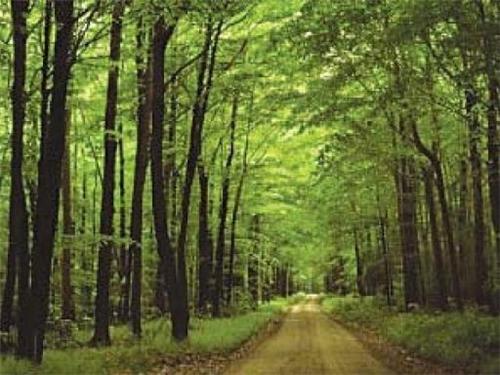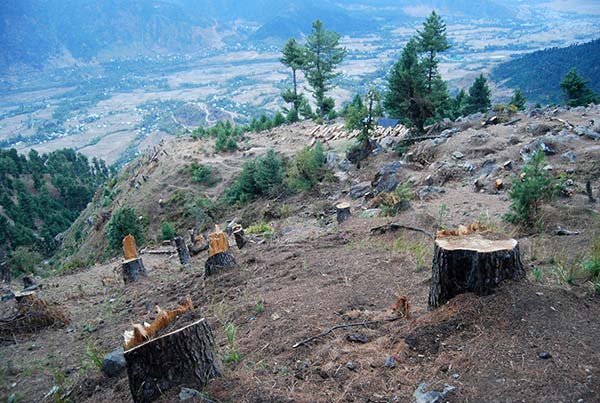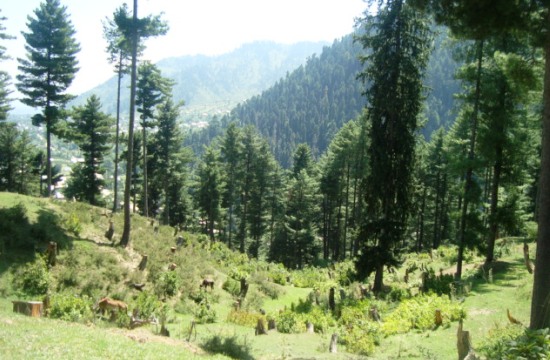
By Aamir Amin Nowshahri
The International Day of Forests is observed every year on March 21 to raise awareness about the importance of forests to people. A resolution was passed by the United Nations (UN) General Assembly on December 21 2012, which declared that March 21 of each year be observed as International Day of Forests.
The resolution calling for observation of International Day of Forests encourages all member states to organize activities relating to all types of forests. Activities expected to take place on this day include tree-planting and other community-level events, and national celebrations including art, photo and film as well as social media outreach.
For the year 2016, the theme for the International Day of Forests is “Forests and Water”. To mark the day, a joint celebration of the International Day of Forests and World Water Day (which falls one day later on March 22) will be held on March 21. The event entitled “Forests and Water | Sustain Life and Livelihoods” will raise awareness of the interconnections between forests and water, and their contributions to implementation of the 2030 Agenda for Sustainable Development.

Significance of Forests
Forests cover around 31 per cent of global land area and 1.6 billion people – including more than 2,000 indigenous cultures – depend on forests for their livelihoods, medicine, fuel and food. The International Day of Forests provides a platform to communicate the vital role forests play in poverty eradication, environmental sustainability and food security.
It is interesting to note that forested watersheds and wetlands supply 75 per cent of the world’s accessible freshwater. Some of the largest cities of the world such as Durban, Jakarta, Rio de Janeiro, Bogota, New York and Madrid obtain significant proportions of their drinking water requirements directly from forested areas.
The figure may sound alarming, but nearly 80 per cent of the world’s population is exposed to high levels of threat to water security according to UN estimates. Forests act as natural water filters, and climate change is altering forests role in water flows and the availability of water resources.
Forests also have a crucial role to play in building and strengthening resilience and studies conducted by the UN suggest that improved water resource management can show considerable economic gains. Water is an essential component of national and local economies, and is needed to create and maintain jobs across all sectors of the economy. Forestry, agriculture and industry are some of the sectors with heavily water-dependent jobs.
The 2016 World Water Development Report will be launched on the occasion of World Water Day this year. The report estimates that more than 1.4 billion jobs (which accounts to as much as 42 per cent of the world’s total active workforce) are heavily water dependent.
Despite their tremendous significance, forests continue to be razed and damaged. Every year, 7 million hectares of natural forest are lost and 50 million hectares of forest land are burned down.

Forests in India
India has long been following a policy of keeping one-third of the country’s total land area under forest and tree cover. According to the India State Forest Report 2015, released in December last year, forest cover in India has increased by 5,081 square kilometers between 2013 and 2015. The report also showed that the country’s carbon stock (amount of carbon stored in forest ecosystems, mainly in living biomass and soil, but to a lesser extent also in dead wood and litter) has also increased by 103 million tonnes.
According to the report, very dense forests in India cover 2.61 per cent of the total forest area, moderately dense forests account for 9.59 per cent while open forests cover as much as 9.14 per cent of the total forest area.
Among all states and union territories, Mizoram has the highest forest cover with 88.93 per cent of the total area, followed by Lakshwadeep, the report says. According to the report, the Andaman and Nicobar Islands have gained around 1,930 square kilometres of very dense forests, Uttar Pradesh has added 572 square kilometres of very dense forest cover and Tamil Nadu has reported a net gain of 100 square kilometres of very dense forest cover.
The report also points out that the mangrove cover in India has increased by 112 square kilometres following acute conservation in the Sunderbans and Bhitarkanika forests.
Despite these positives, there are also some downsides in the report. Altough the total forest cover in the country has seen an increase, around 2150 square kilometres of very dense and mid-dense forests have been wiped out since 2013. The states of Jammu and Kashmir, Uttarakhand, Meghalaya, Kerala, Arunachal Pradesh, Karnataka and Telangana have suffered huge losses of forest cover, the report points out.
In addition to this, around 2,254 square kilometres of mid-dense forest cover has turned into non-forest lands in the past two years as per the report.
The Way Ahead
In a message to Governments, businesses, civil society and other partners ahead of International Day of Forests, the UN Secretary General Ban Ki-moon has warned that two-thirds of the total world population could face water-stressed conditions within the next decade.
Reiterating that forests are central to our future prosperity and the stability of the global climate, he called upon all stakeholders involved to adopt holistic policies and practices to protect, restore and sustain healthy forests for our common future.
(The writer is Information Assistant at PIB, Srinagar.)















